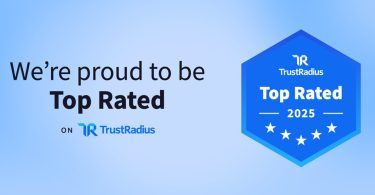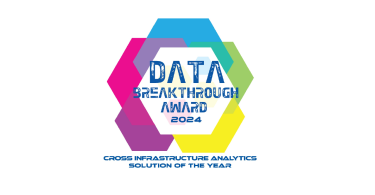As the adage goes, customers are the lifeblood of every business, and at BMC Helix, everything we...
The BMC Beat
BMC Helix Receives TrustRadius Top Rated Award
Mainframe Transformation with AIOps: Smarter Operations, Greater...
Organizations that rely on legacy mainframe monitoring tools often face costly inefficiencies...
Top 10 Popular Blog Posts
Docker CMD vs. ENTRYPOINT: What’s the Difference and How to Choose
Top Paying IT Certifications in 2022
The State of SaaS in 2022: Growth Trends & Statistics
SRE vs. DevOps: What’s the Difference?
CIO vs. CTO: What’s the Difference?
IT Support Levels Clearly Explained: L1, L2, L3 & More
Python vs Java: What’s The Difference?
SaaS vs. PaaS vs. IaaS: What’s the Difference and How to Choose
Digital Transformation Metrics & KPIs for Measuring Success
About BMC Software
As BMC and BMC Helix, we are committed to a shared purpose for customers in every industry and around the globe. BMC empowers 86% of the Forbes Global 50 to accelerate business value faster than humanly possible by automating critical applications, systems, and services to take advantage of cloud, data, and emerging AI technologies. BMC Helix, now operating as an independent company, helps the world’s most forward-thinking IT organizations turn AI into action—unlocking human potential to multiply productivity so teams can focus on the work that matters most. Learn more about BMC and BMC Helix
Workload Automation
Control-M and SAP RISE: Ready for the Future of SAP S/4HANA...
As enterprises accelerate their digital transformation journeys, many are turning to SAP RISE with...
Empower Digital Innovation with Control-M and SAP Business...
SAP Business Technology Platform (SAP BTP) is a comprehensive, multi-cloud platform that enables...
IT Automation vs IT Orchestration: Using Both for Maximum Benefit
Control-M vs Ansible: How are they Different?
What Are Managed File Transfers? MFT Explained
Workload Automation (WLA) vs Robotic Process Automation (RPA): What’s The Difference?
Workflow Orchestration: An Introduction
From Automation to Orchestration: Migrating to a Single Platform
Analyst Report: EMA Radar Report for Workload Automation
Putting Workflow Orchestration to Work for You
Job Scheduling vs Workload Automation: What’s The Difference?
Control-M Reviews and User Ratings: The Definitive List
IT Service Management
Build Your Own Chatbot
If you’re looking to build an artificial intelligence (AI)-powered chatbot, watch this session from...
Tailoring Insights: Creating Personalized Dashboards for Users...
In a managed service provider (MSP)-centric environment, managing the diverse needs of multiple end...
Service Desk Support Analyst: Roles and Responsibilities
Impact, Urgency & Priority: Understanding the Matrix
6 SLA Best Practices for Service Management Success
Service Availability: Calculations and Metrics, Five 9s, and Best Practices
What Is Enterprise Service Management? (ITSM for the Rest of Us)
Gartner®: Magic QuadrantTM for IT Service Management Tools
Incident Management: The Complete Guide
Total Economic Impact Reveals 361% ROI for Service Desk and Intelligent Automation Benefits
The BMC Support Organization
Mainframe
AIOps and the Mainframe: A Smart Partnership Built for the...
In this episode of BMC AMI Z Talk, Stefanie Scott and Alan Warhurst discuss how an intelligent...
Women in Mainframe: The Legacy of Innovation Continues
The mainframe has a long history of female trailblazers, with a legacy that continues through to...
Mainframe MIPS: An Introduction
Java on the Mainframe: z/OS vs Linux
COBOL Trends
How To Provide Value and Delight in Mainframe Development with the Kano Model
Scrum Values: How Does Jira Fit Into Agile?
From Zero to Hero: Making Zero Trust Happen
Free: Reference Guides for DB2 12 & DB2 11 for z/OS
Top 4 Questions When Breaking Free from Broadcom/CA
AIOps
Award-Winning Excellence: BMC Helix AIOps Named “Cross...
BMC Helix AIOps and observability has been recognized as “Cross Infrastructure Analytics Solution...
A Roadmap To AIOps
In my conversations with customers about AIOps, I frequently hear concerns about maturity...
Interpretability vs Explainability: The Black Box of Machine Learning
Artificial Intelligence (AI) vs Machine Learning (ML): What’s The Difference?
Gartner Market Guide for AIOps Platforms
AIOps Machine Learning: Supervised vs Unsupervised
AIOps and the New IT Skill Sets
How Automation Maximizes AIOps Value
How AIOps Powers ITSM/Service Desk
Top AIOps Tools & How To Choose
4 Types of Artificial Intelligence
Learn AIOps webinar series
DevOps
Cloud
Business of IT
IT Operations
Big Data & ML
Editor's Picks
OSI Model: The 7 Layers of Network Architecture
The OSI (Open Systems Interconnection) Model describes how networked systems communicate. It is a...
What Is the Internet of Behaviors? IoB Explained
In their strategic predictions for 2020, Gartner announced that the Internet of Behaviors is...

































